Sometimes something interesting comes up, either at auction or eBay, which peaks my interest, and that happened with the following two diaries in July 2025.
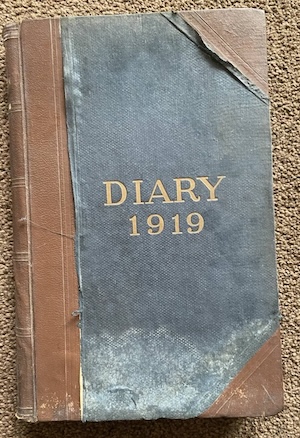
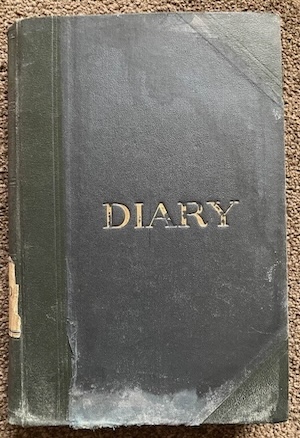
They were purchased from eBay in two separate transactions - the first for the 1919 diary, to see what it might contain and whether it was worth having, and the second to obtain the copy for 1920.
The seller was kind enough to give me a little of the history of these books and apparently they came from the basement of the old Midland Bank in Lincoln around 2005 during the renovation. There were 4 boxes of paperwork and books that remained, the rest either being kept by HSBC, or too far damaged to keep, through damp and mould.
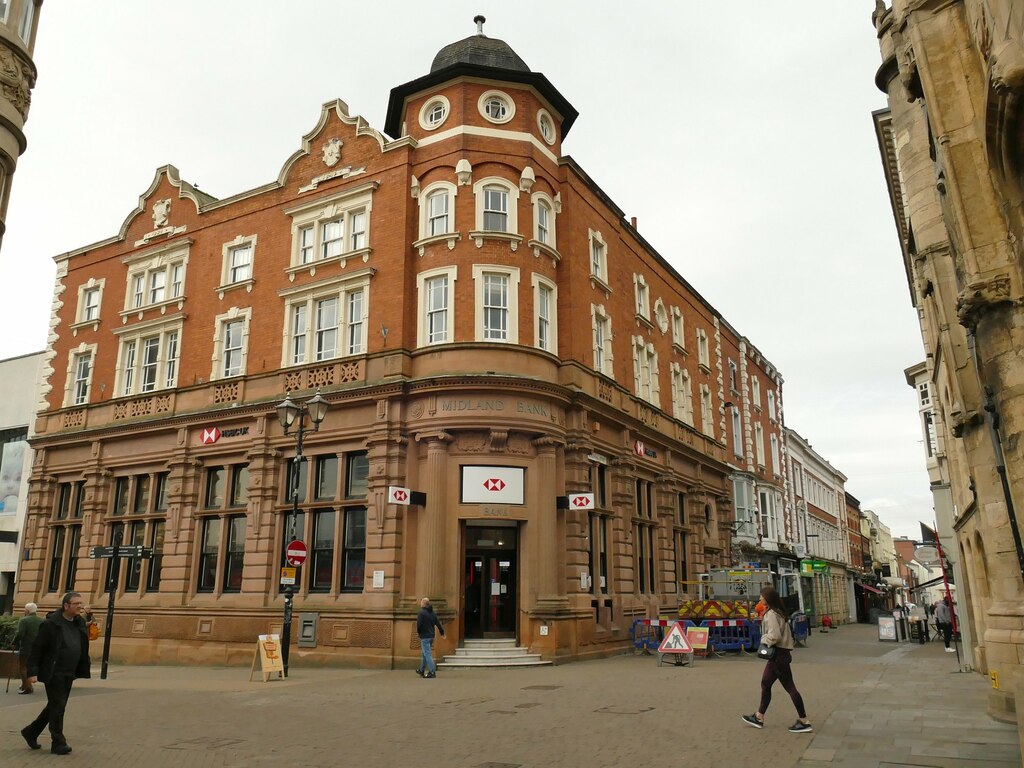
HSBC, Lincoln High Street (courtesy of geograph)
Looking at the diaries, let’s talk a little about their dimensions. Both are approximately 32.5cm x 22cm x 2.5cm (h x w x d) in size and weigh 1,443g and 1,459g respectively. The difference in weight can be accounted for by (at least) the addition of an A-Z tabbed section in the 1920 edition. Both diaries were produced by T.J. & J. Smith’s of 20 Charterhouse Square, London, E.C. 1.
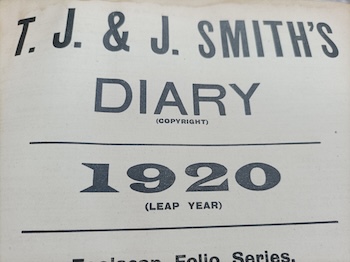
Company Title inside each diary
As for condition, both show signs of having been wet, but thankfully the contents are still very readable. Most of the diaries, too, are in the same handwriting except for some short periods where another person wrote entries.
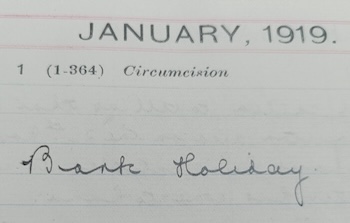
Jan 1 1919
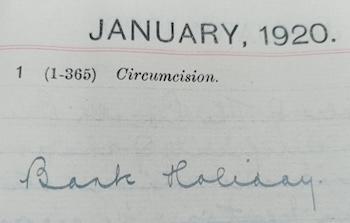
Jan 1 1920
Lastly, almost all days are filled in except Sundays and Bank Holidays.
Aside from the physical aspects of the diaries, it’s their entries and who they relate to that are of most interest to me. This period of the bank’s history was when it was known as the The London Joint City and Midland Bank, often referred to as London City & Midland Bank, which, thanks to Google’s AI overview, was a prominent British bank that existed from 1918 to 1923. Having been formed through the merger of London Joint Stock Bank and London City and Midland Bank in 1918, by 1923, it was renamed Midland Bank - a name many of us will be familiar with. Ultimately, Midland Bank was acquired by HSBC in 1992.
The next obvious line of enquiry was, what was the name of the principal author?
Searching the first 200 entries for the 1921 census for the London Joint City and Midland Bank in Lincoln High Street, brought up the following employees for the LC&M Bank:
| Name | Role | Age | Status |
|---|---|---|---|
| John Sutton Baker | Bank Manager | 63 Years 8 Months | Married |
| John Grove Hardwicke | Assistant Bank Manager | 48 Years 6 Months | Married |
| Ernest Edward Marsh | Caretaker | 49 Years 3 Months | Married |
| Adeline Bowler | Bank Clerk | 38 Years 1 Month | Single |
| Alfred John Hindley | Bank Clerk | 34 Years 2 Months | Married |
| Alfred Warren | Bank Clerk | 19 Years 10 Months | Single |
| Arthur A Meldrum | Bank Clerk | 20 Years 2 Months | Single |
| Arthur Morris | Bank Accountant | 40 Years 6 Months | Married |
| Arthur Watterson Taylor | Pass Book Clerk | 20 Years 10 Months | Single |
| Desmond P Hamilton | Bank Clerk | 16 Years 10 Months | Single |
| Charles Herbert Sowby | Bank Accountant | 57 Years 7 Months | Widowed |
| Constance Emily Taylor | Bank Clerk | 25 Years 5 Months | Single |
| Desmond P Hamilton | Bank Clerk | 16 Years 10 Months | Single |
| Edwin Herbert Lawson | Bank Cashier | 37 Years 4 Months | Married |
| Francis George Brailsford | Clerk | 18 Years 7 Months | Single |
| Frank Thornton Pickering | Bank Clerk | 18 Years 10 Months | Single |
| Frederick Charles Willmin | Bank Clerk | 21 Years 1 Month | Single |
| George Watson | Bank Ledger Clerk | 26 Years 4 Months | Single |
| George William Wilson | Bank Clerk | 20 Years 4 Months | Single |
| Hanley Whittaker Howard | Bank Clerk | 23 Years 2 Months | Single |
| Harold Brown | Bank Clerk | 41 Years 11 Months | Single |
| Harold Miars | Bank Cashier | 42 Years 10 Months | Married |
| Letitia Mary Thornhill | Bank Clerk | 23 Years 11 Months | Single |
| Ralph William North | Bank Clerk | 36 Years 3 Months | Married |
| Reginald Arthur Doeg | Bank Inspector | 46 Years 3 Months | Married |
| Reginald Preston | Bank Cashier | 30 Years 11 Months | Married |
| Stanley Hird | Dealer | 29 Years 1 Month | Married |
There’s lots to unpick here.
- These are mostly male employees with only 2 females: Adeline and Constance.
- There’s a slight bias towards being single and young.
- John Sutton Baker seems quite old at almost 64. Retirement age in 1920 was 65 but presumably he was doing quite well for himself, yet continued to work. Note: when he eventually died, his estate was worth 2.1 million pounds in today’s money.
- Adeline Bowler was a boarder with Desmond P Hamilton and completed the census return. They both lived at the Vicarage, Skellingthorpe, Lincoln.
- There seems to be only one bank manager (John Sutton Baker) with an assistant (John Grove Hardwicke).
- Reginald Doeg, the Bank Inspector, wasn’t actually part of the branch in the High Street, but instead floated between branches…inspecting.
Luckily, in the 1920 diary, there was also a piece of paperwork containing a written dialogue between the bank and head office. Crucially, it was signed with two sets of initials: J.S.B and A.S. J.S.B would clearly be John Sutton Baker, so we know he was working at the bank in 1920. A.S. then was probably somebody at Head Office.
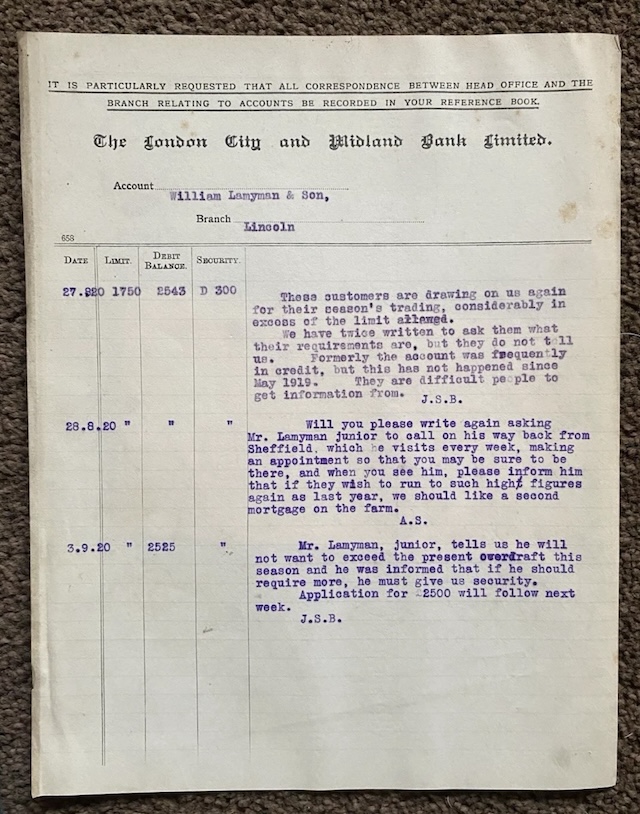
Head Office Letter 1920
If like me you don’t work in a bank and the year isn’t 1920, it’s probably worth trying to briefly understand what each of those roles at the bank were.
A Bank Clerk, the most common role at LC&M Bank, was probably the role Francis Brailsford held even though his census return just said Clerk. They performed a range of clerical roles and despite being junior within the banking industry, was considered quite coveted in clerical work, generally. Arithmetic, bookkeeping, and maintaining accurate records, often with meticulous handwriting were their main duties.
A Bank Cashier did similar work to the Clerk but also handled cash transactions, including receiving deposits, paying out withdrawals, and managing the daily flow of money in and out of the bank.
In 1920, a Bank Ledger Clerk was primarily responsible for maintaining accurate financial records by meticulously recording transactions in ledgers. This involved detailed manual bookkeeping, requiring excellent handwriting, accuracy, and a strong understanding of accounting principles. They were a vital part of the bank’s operations, ensuring the integrity and reliability of financial information. I would imagine that they would work closely with the Bank Accountant (Charles Sowby).
Lastly, a Bank Dealer was essentially authorized to buy and sell government debt securities, such as federal and municipal bonds. These dealers played a crucial role in the market by facilitating the buying and selling of these securities, often on behalf of clients, and were essential for the smooth functioning of the financial system.
So far, we’ve talked about how I came by the diaries, how the seller obtained them, and many of the people that worked at the bank (at least in 1921) together with the roles they played. But that begs the question…who wrote in the diaries? That’ll come soon.
In the meantime, I am building an index of the people and organisations so please do check back often to see it develop.
Seen any mistakes? Have something to add about what you have read? Have any questions? I’d love to know, so please send an email (address at the bottom of the page).